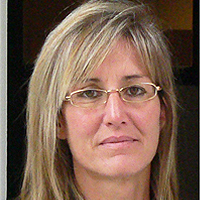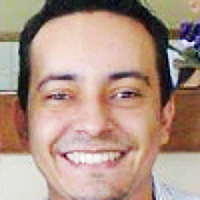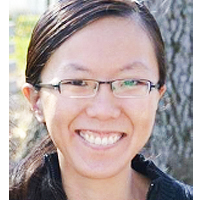Abstract
Observational Study
A Genetic study in assisted reproduction and the risk of congenital anomalies
Kaparelioti Chrysoula, Koniari Eleni*, Efthymiou Vasiliki, Loutradis Dimitrios, Chrousos George and Fryssira Eleni
Published: 12 October, 2021 | Volume 4 - Issue 4 | Pages: 096-100
In vitro fertilization is one of the most common and effective procedure for thousands of couples worldwide who want to have a child and are unable to do so for various reasons. Diverse studies show that couples who conceive naturally after one year of trying had newborns with an increased risk of prematurity and low birth weight, compared with couples who conceived before completing one year of trying. Children from assisted reproduction (AR), have a 30% increased risk of prematurity and low birth weight, compared with children from infertile fathers. Regarding the conflicting results the present study aimed to record the frequency of genetic, congenital anomalies in children and adolescents who had examined in the last decade to the Clinical Genetics Clinic of the National and Kapodistrian University of Athens whose mothers had undergone assisted reproduction. The research process was conducted at the "Aghia Sofia" Children's Hospital based in Athens. However, the cases that were studied came from all over Greece. Initially, the researcher recorded the cases that came to the clinic of Clinical Genetics and whose conception occurred after technical assisted reproduction. After telephone communication and the consent of the parents, a live appointment was scheduled. In this meeting-interview all the provisions of the investigation and the protocol were asked and some elements of the medical history of the cases were confirmed. The total sample included 230 children and adolescents. The resulting data were recorded on a printed form/questionnaire. Then, they were registered electronically in the program SPSS 25.0 (Statistical Package for Social Sciences) with a specific unit code for each case/patient, followed by the processing and statistical analysis of the data as well as the recording of the results. The gender of the participants was male for 118 participants (51.3%) and 112 females (48.7%). Mean and standard deviation (SD) of maternal, paternal (at the time of delivery) age was equal to 36.38 (5.94) and 39.94 (6.58) respectively. The observed abdormalities were 35.53% psychomotor retardation, 23.68% facial abnormalities, 23.68% spinal cord abnormalities, 21.05% morphological abnormalities, 20.61% short stature, 19.74% developmental disorders, 19.30% heart disease, 16.67% neurological diseases, 14.47% genetic syndromes, 11.40% genital abnormalities, 8.33% limb abnormalities, 7.46% dermatological abnormalities, 6.14% eye abnormalities, 6.14% hypothyroidism, 5.70% endocrine disorders, 5.26%otolaryngology abnormalities, 2.63% disease of kidney, intestine, 2.19% vascular malformations. Regarding the karyotype chromosome analysis by G-banding technique, from the 230 children in: 24 (10.43%) a pathological result was found, in 158 children (68.70%) it was found normal (46, XX or 46, XY by case) without other findings, while in 48 children (20.87%) the test was not performed for various reasons. Regarding the results of molecular analysis (DNA) from the 230 children, in 50 (21.74%) a pathological finding was found, in 56 children (24.35%) no abnormalities were found and in 124 children (53.91%) no molecular analysis was performed for various reasons. In conclusion, the sample of this descriptive study is characterized as uniform in terms of the method of assisted reproduction since 96.24% had followed the classic IVF. Full-term pregnancy was associated with the appearance of malignancy and head morphological abnormalities (64.6%), normal pregnancy was associated with genetic syndromes (18.2%) and facial abnormalities (11.1%). It is recommended the screening oocyte and sperm donors in order to help protect the safety and health of donors, recipients, and future offspring. The present study confirms the association of the presence of congenital anomalies after in vitro fertilization (IVF). However, the absolute risk of developing severe dysplasias after an IVF procedure is limited.
Read Full Article HTML DOI: 10.29328/journal.cjog.1001095 Cite this Article Read Full Article PDF
Keywords:
Assisted reproduction; Congenital; Children; in vitro
References
- Simpson JL, Humphries S, Evans JP, Simmons LWM Fitzpatrick JL, et al. Relationships between sperm length and speed differ among three internally and three externally fertilizing species. Evolution. 2014; 68: 92-104.PubMed: https://pubmed.ncbi.nlm.nih.gov/24224469/
- Hansen PJ. Antecedents of mammalian fertility: Lessons from the heat-stressed cow regarding the importance of oocyte competence for fertilization and embryonic development. Animal Front. 2013; 34-39.
- Davies MJ, Moore VM, Willson KJ, Van Essen P, Priest K, et al. Reproductive technologies and the risk of birth defects. N Engl J Med. 2012; 366: 1803-1813.PubMed: https://pubmed.ncbi.nlm.nih.gov/22559061/
- Messerlian C, Maclagan L, Basso O. Infertility and the risk of adverse pregnancy outcomes: a systematic review and meta-analysis. Hum Reprod. 2013; 28, 125-137.PubMed: https://pubmed.ncbi.nlm.nih.gov/23042798/
- Kawwass JF, Crawford S, Kissin DM, Session DR, Boulet S, et al. Tubal factor infertility and perinatal risk after assisted reproductive technology. Obstet Gynecol. 2013; 121: 1263-1271.PubMed: https://pubmed.ncbi.nlm.nih.gov/23812461/
- Declercq E, Luke B, Belanoff C, Cabral H, Diop H, et al. Perinatal outcomes associated with assisted reproductive technology: the Massachusetts Outcomes Study of Assisted Reproductive Technologies (MOSART). Fertil Steril. 2015; 103: 888-895.PubMed: https://pubmed.ncbi.nlm.nih.gov/25660721/
- Ooki S. Maternal age and birth defects after the use of assisted reproductive technology in Japan, 2004-2010. Int J Womens Health. 2013; 5: 65-77.PubMed: https://pubmed.ncbi.nlm.nih.gov/23450007/
- Ooki S. Birth defects after assisted reproductive technology according to the method of treatment in Japan: nationwide data between 2004 and 2012. Environ Health Prev Med. 2015; 20: 460-465.PubMed: https://www.ncbi.nlm.nih.gov/pmc/articles/PMC4626456/
- Pelkonen S, Hartikainen AL, Ritvanen A, Koivunen R, Martikainen H, et al. Major congenital anomalies in children born after frozen embryo transfer: a cohort study 1995-2006. Hum Reprod. 2014; 29: 1552-1557.PubMed: https://pubmed.ncbi.nlm.nih.gov/24812318/
- Han Y, Luo H, Zhang Y. Congenital anomalies in infants conceived by infertile women through assisted reproductive technology: A cohort study 2004-2014. Exp Ther Med. 2015; 16: 3179-3185.PubMed: https://pubmed.ncbi.nlm.nih.gov/30214541/
- Yu HT, Yang Q, Sun XX, Chen GW, Qian NS, et al. Association of birth defects with the mode of assisted reproductive technology in a Chinese data-linkage cohort. Fertil Steril. 2018; 109: 849-856.PubMed: https://pubmed.ncbi.nlm.nih.gov/29778384/
- Beltran Anzola A, Pauly V, Montjean D, Meddeb L, Geoffroy-Siraudin C, et al. No difference in congenital anomalies prevalence irrespective of insemination methods and freezing procedure: cohort study over fourteen years of an ART population in the south of France. J Assist Reprod Genet. 2017; 34: 867-876.PubMed: https://www.ncbi.nlm.nih.gov/pmc/articles/PMC5476536/
- Levi Setti PE, Albani E, Morenghi E, Morreale G, Delle Piane L, et al. Comparative analysis of fetal and neonatal outcomes of pregnancies from fresh and cryopreserved/thawed oocytes in the same group of patients. Fertil Steril. 2013; 100: 396-401.PubMed: https://pubmed.ncbi.nlm.nih.gov/23608156/
- Zhu J, Zhu Q, Wang Y, Wang B, Lyu Q, et al. Comparative study on risk for birth defects among infants after in vitro fertilization and intracytoplasmic sperm injection. Syst Biol Reprod Med. 2019; 65: 54-60. PubMed: https://pubmed.ncbi.nlm.nih.gov/30526119/
- El Koumi MA, Al Banna EA, Lebda I. Pattern of congenital anomalies in newborn: a hospital-based study. Pediatr Rep. 2013; 5: e5. PubMed: https://pubmed.ncbi.nlm.nih.gov/23667734/
Figures:
Similar Articles
-
Screening of Gestational diabetes mellitusGehan Farid*,Sarah Rabie Ali*,Reem Mohammed Kamal. Screening of Gestational diabetes mellitus . . 2018 doi: 10.29328/journal.cjog.1001003; 1: 014-023
-
Maternal and fetal outcome of comparative study between old & adopted new value of screening of Gestational Diabetes Mellitus in tertiary centre in Saudi ArabiaGehan Farid*,Reem Mohammed Kamal*,Mohamed AH Swaraldahab,Sarah Rabie Ali. Maternal and fetal outcome of comparative study between old & adopted new value of screening of Gestational Diabetes Mellitus in tertiary centre in Saudi Arabia. . 2018 doi: 10.29328/journal.cjog.1001005; 1: 026-034
-
Managing epileptic women in pregnancySarmad Muhammad Soomar*,Saima Rajpali. Managing epileptic women in pregnancy. . 2019 doi: 10.29328/journal.cjog.1001015; 2: 001-002
-
Intracerebral Hemorrhage of Brainstem in triple pregnancy after in vitro fertilization by receiving Ovum Donation: A case report and reviewAndreas Suhartoyo Winarno*,Lukas Schloesser,Frederic Dietzel,Percy Balan,Thomas Hoehn,Monika Hampl,Tanja Natascha Fehm. Intracerebral Hemorrhage of Brainstem in triple pregnancy after in vitro fertilization by receiving Ovum Donation: A case report and review. . 2019 doi: 10.29328/journal.cjog.1001037; 2: 138-144
-
Maternal, neonatal and children´s health in Sub-Saharan East AfricaJosef Donát*. Maternal, neonatal and children´s health in Sub-Saharan East Africa. . 2020 doi: 10.29328/journal.cjog.1001049; 3: 043-045
-
The influence of HBV or HCV infections on the pregnancy courseTadeusz Wojciech Lapiński*. The influence of HBV or HCV infections on the pregnancy course. . 2020 doi: 10.29328/journal.cjog.1001058; 3: 098-102
-
Chronic endometritis in in vitro fertilization failure patientsAfaf T Elnashar*,Mohamed Sabry. Chronic endometritis in in vitro fertilization failure patients. . 2020 doi: 10.29328/journal.cjog.1001073; 3: 175-181
-
Predominance of fetal malformations among pregnant women: A multi-centric observational studySayed Mohamed Sayed,Ahmed Khedr Khalifa,Nesreen Abd El Fattah Abd Allah Shehata*,Mohamed AM Eweis,Sherwet M Shawky. Predominance of fetal malformations among pregnant women: A multi-centric observational study. . 2021 doi: 10.29328/journal.cjog.1001087; 4: 055-059
-
A Genetic study in assisted reproduction and the risk of congenital anomaliesKaparelioti Chrysoula,Koniari Eleni*,Efthymiou Vasiliki,Loutradis Dimitrios,Chrousos George,Fryssira Eleni. A Genetic study in assisted reproduction and the risk of congenital anomalies. . 2021 doi: 10.29328/journal.cjog.1001095; 4: 096-100
-
Prediction of neonatal and maternal index based on development and population indicators: a global ecological studySedigheh Abdollahpour,Hamid Heidarian Miri,Talat Khadivzadeh*. Prediction of neonatal and maternal index based on development and population indicators: a global ecological study. . 2021 doi: 10.29328/journal.cjog.1001096; 4: 101-105
Recently Viewed
-
Age as a Predictor of Time to Response for Patients Undergoing Medical Management of Endometrial CancerM Larissa Weirich*, Carolyn R Larkins, Wendy Y Craig, Emily Meserve, Terri Febbraro, Jason Lachance, Leslie S Bradford. Age as a Predictor of Time to Response for Patients Undergoing Medical Management of Endometrial Cancer. Clin J Obstet Gynecol. 2023: doi: 10.29328/journal.cjog.1001144; 6: 150-159
-
Reverse Breech Extraction versus Vaginal Push before Uterine Incision during Cesarean Section with Fully Dilated Cervix and Impacted Fetal HeadElsayed Elshamy*, Abdelbar Sharaf, Abdelhamid Shaheen. Reverse Breech Extraction versus Vaginal Push before Uterine Incision during Cesarean Section with Fully Dilated Cervix and Impacted Fetal Head. Clin J Obstet Gynecol. 2023: doi: 10.29328/journal.cjog.1001145; 6: 160-164
-
Postdate Pregnancy Maternal and Fetal Outcomes among Sudanese WomenAwadalla Abdelwahid Suliman*, Gawahir Murad Abdelrahman, Hajar Suliman Ibrahim Ahmed, Abdelgadir Suliman Ibrahim, Kabbashi Mohammed Adam Hammad, Emad Abdalla Siddig Omer, Siddig Omer M Handady. Postdate Pregnancy Maternal and Fetal Outcomes among Sudanese Women. Clin J Obstet Gynecol. 2023: doi: 10.29328/journal.cjog.1001146; 6: 165-171
-
Management of Congenital Cervical Teratoma with Application of EXIT Protocol - Case ReportGleydson Cavalcante Nogueira*, Larissa Cassemiro da Silva, Diná Mie Hatanaka, Marcelo Iasi, Romy Schmidt Brock Zacharias, Mariano Tamura Vieira Gomes. Management of Congenital Cervical Teratoma with Application of EXIT Protocol - Case Report. Clin J Obstet Gynecol. 2023: doi: 10.29328/journal.cjog.1001147; 6: 172-178
-
The Effectiveness of Honey-Based Ferric Perchloride Paste on Post-conization in the Cicatricial and Infectious Context: A Randomized Clinical TrialCarlos Afonso Maestri*,Rodolfo Belz Antoniazzi,Isabela Ceschin Maestri,Rafaela Ceschin Fernandes,Fernanda Villar Fonseca. The Effectiveness of Honey-Based Ferric Perchloride Paste on Post-conization in the Cicatricial and Infectious Context: A Randomized Clinical Trial. Clin J Obstet Gynecol. 2023: doi: 10.29328/journal.cjog.1001148; 6: 179-184
Most Viewed
-
Feasibility study of magnetic sensing for detecting single-neuron action potentialsDenis Tonini,Kai Wu,Renata Saha,Jian-Ping Wang*. Feasibility study of magnetic sensing for detecting single-neuron action potentials. Ann Biomed Sci Eng. 2022 doi: 10.29328/journal.abse.1001018; 6: 019-029
-
Evaluation of In vitro and Ex vivo Models for Studying the Effectiveness of Vaginal Drug Systems in Controlling Microbe Infections: A Systematic ReviewMohammad Hossein Karami*, Majid Abdouss*, Mandana Karami. Evaluation of In vitro and Ex vivo Models for Studying the Effectiveness of Vaginal Drug Systems in Controlling Microbe Infections: A Systematic Review. Clin J Obstet Gynecol. 2023 doi: 10.29328/journal.cjog.1001151; 6: 201-215
-
Causal Link between Human Blood Metabolites and Asthma: An Investigation Using Mendelian RandomizationYong-Qing Zhu, Xiao-Yan Meng, Jing-Hua Yang*. Causal Link between Human Blood Metabolites and Asthma: An Investigation Using Mendelian Randomization. Arch Asthma Allergy Immunol. 2023 doi: 10.29328/journal.aaai.1001032; 7: 012-022
-
An algorithm to safely manage oral food challenge in an office-based setting for children with multiple food allergiesNathalie Cottel,Aïcha Dieme,Véronique Orcel,Yannick Chantran,Mélisande Bourgoin-Heck,Jocelyne Just. An algorithm to safely manage oral food challenge in an office-based setting for children with multiple food allergies. Arch Asthma Allergy Immunol. 2021 doi: 10.29328/journal.aaai.1001027; 5: 030-037
-
Impact of Latex Sensitization on Asthma and Rhinitis Progression: A Study at Abidjan-Cocody University Hospital - Côte d’Ivoire (Progression of Asthma and Rhinitis related to Latex Sensitization)Dasse Sery Romuald*, KL Siransy, N Koffi, RO Yeboah, EK Nguessan, HA Adou, VP Goran-Kouacou, AU Assi, JY Seri, S Moussa, D Oura, CL Memel, H Koya, E Atoukoula. Impact of Latex Sensitization on Asthma and Rhinitis Progression: A Study at Abidjan-Cocody University Hospital - Côte d’Ivoire (Progression of Asthma and Rhinitis related to Latex Sensitization). Arch Asthma Allergy Immunol. 2024 doi: 10.29328/journal.aaai.1001035; 8: 007-012

If you are already a member of our network and need to keep track of any developments regarding a question you have already submitted, click "take me to my Query."
















































































































































